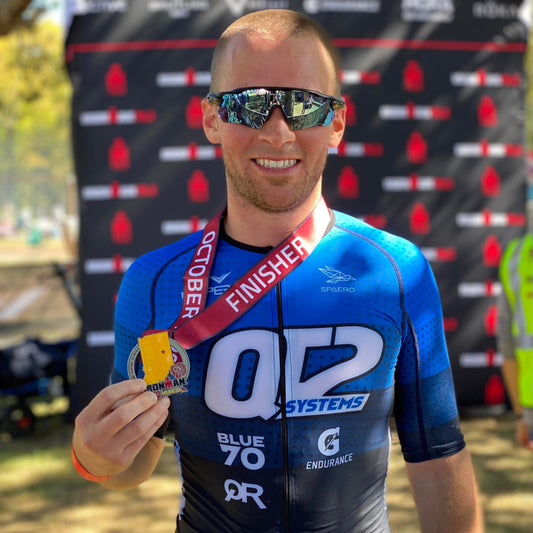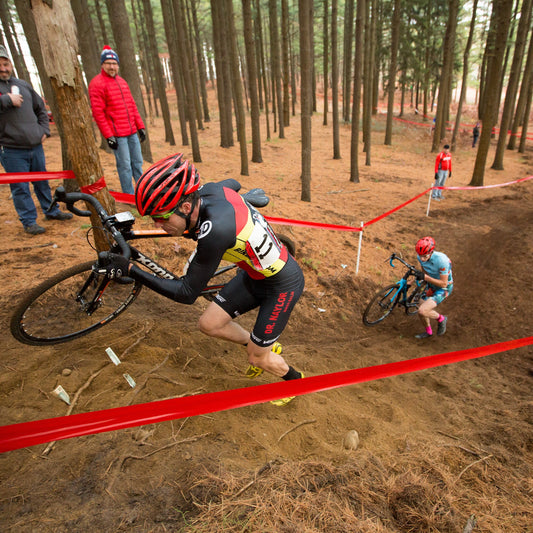Written By Coach Reem Jishi
Have you always wanted to try to run a 5K, but don’t know where to start? Over the past fifteen years, I have coached many runners to their first 5Ks. Some have turned into life long runners, some checked the 5K off their bucket list and moved onto other adventures, and some never made it to the starting line. Whether your 5K is successful or not depends on a multitude of factors. Here are my tips for setting yourself up for a great day.
#1: Pick the “right” race. No matter where you live, a quick search of the internet will likely yield many 5K races. The options are there, but how do you pick. Here are a few factors to consider:
- Timing. If you have never run a 5K, I recommend that you pick a race at least 12 weeks out. Check your calendar, and find one that works with your schedule. And then mark it down in ink.
- Location. Part of what makes racing complicated is the logistics of getting there. Minimize the stress and pick a race close to home. This also has the advantage of letting you train on the course and makes it easier for your supporters to come out on race day to cheer for you.
- The Size of the Race. 5Ks can vary in size from under 100 to several 1000s. What’s your preference? If you like to keep things calm and are independently motivated, then sometimes the smaller races are ideal. But if you like the energy which comes from having others around you both running and cheering, then the larger races might be your ticket. Larger races also often come with better on course support and race swag.
- The Course. Hills or flat, pedestrian path or city streets, long straight sections or lots of turns, single loop or multiple? I personally like the races which wind through city streets. It’s a great way to see the sights and make it more likely that people will come out to watch. But that’s me - no right answer here. Think about what you prefer and factor that into your race selection.
#2: Find a running partner. Yes, you can do all of your training on your own, but sometimes it’s helpful to have someone else along for the ride. On those days when you don’t feel like running (and those days will happen), you will be far more likely to get out the door if you are meeting a friend. If you can't find someone to join you running, find someone who can provide support. Just having someone that can keep you on track and accountable is helpful. Running with others often can make the time running feel like it passes more quickly. You can also look for a local running club or group training program.
#3: Buy a good pair for running shoes. It is critical to have a good pair of running shoes that fit your feet. The best option is to go to your local running store and take advantage of their guidance. The shoes should feel comfortable just standing. If they don't, try a different pair. Then walk and run around the store and make sure that they still feel comfortable. While you're there, pick up a few good pairs of socks.
#4: Start slow and build into the program. One mistake I find that beginners often make is to sign up for a race, and then go out the next day and see how far they can run without stopping. This often leads to them being so sore the next day that they can’t run for a while, and also tends to be a discouraging experience. Instead, have a plan and slowly build into the distance. For those new to running, I highly recommend a walk to run approach.
A walk to run approach begins with walks, transitions to walk and run intervals, and ultimately (and optionally) to a continuous run. Early in the training, run intervals are short. Each week, the run intervals increase in duration as the walk intervals decrease in duration.
The keys to successfully transitioning from walk to run are:
- Start Short. If you are not currently exercising, start with 10-30 minute walks 3-5 times each week for at least two weeks. Then, once you are ready to get started layering in running intervals, pick a run interval which is short enough for you to complete without feeling like you need to stop to walk. I.e., you should be able to continue running past the interval length.
- Build Slowly. Follow the same run/walk interval format for 2-3 runs (or more) prior to progressing to the next interval. The idea is for you to feel comfortable and confident with the run times before adding more time.
- Keep It Conversational. The run intervals should be done at a comfortable conversation pace. Walk intervals should be done as brisk walks. The walk breaks will help the heart rate drop and muscles recover in between run segments.
TIP: It really helps to have a pre-programmed timer, so that you just need to listen to the beeps!
Set forth below is a suggested walk to run plan for getting you to your first 5K in 10 weeks.


This walk to run progression is just a guidance. If you feel comfortable sticking with shorter run segments, then do it! Or if you find that you prefer longer run segments then that’s all good too. The point is to walk before you need to, and not when you can’t run any more. Find what works for you. If you use a different run/walk interval than specified in the above plan, stick to the same total session time. And don’t forget to walk for 5 minutes to warm up before you start running and walk 5 minute after you finish to cool down.
5. Include strength training into your program. To successfully get to the start line, you need to be able to run consistently. You can only do that if your muscles are recovering between workouts and you are not experiencing aches and pains. Strength training can be the ticket to avoiding injury and running more comfortably. There are many options out there, but the more the exercises utilize the muscles you use while running, the better. Here’s a link to a basic run strength routine.
https://www.youtube.com/watch?v=iSJoz8ErO5U&t=7s
#6. Have fun! Finishing your first 5K is a rewarding and exciting experience. Through the training, you will feel yourself getting fitter. Embrace that feeling. Before you know it, what seemed like only a dream will be in front of you. You will only cross the finish line of your first 5K once in a lifetime, so make it a good one! Keep a smile on your face, thank the volunteers, cheer for others around you and celebrate your accomplishment.
Coach Reem is a life long runner. Over the past twenty five years she has participated in hundreds of races from 5Ks to marathons. She works with athletes of all levels, but has a true passion for working with beginners.





